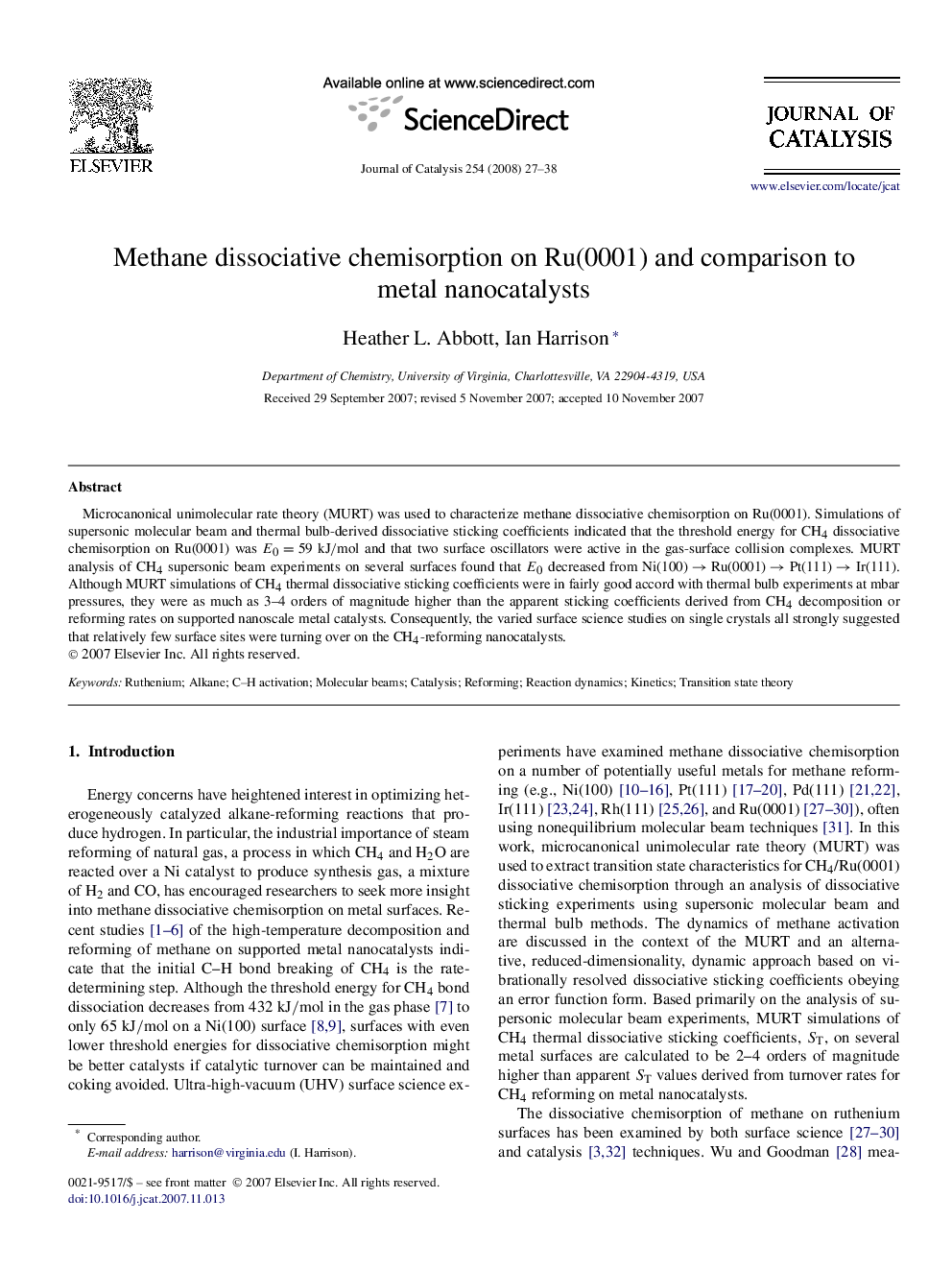| Article ID | Journal | Published Year | Pages | File Type |
|---|---|---|---|---|
| 62354 | Journal of Catalysis | 2008 | 12 Pages |
Microcanonical unimolecular rate theory (MURT) was used to characterize methane dissociative chemisorption on Ru(0001). Simulations of supersonic molecular beam and thermal bulb-derived dissociative sticking coefficients indicated that the threshold energy for CH4 dissociative chemisorption on Ru(0001) was E0=59 kJ/molE0=59 kJ/mol and that two surface oscillators were active in the gas-surface collision complexes. MURT analysis of CH4 supersonic beam experiments on several surfaces found that E0E0 decreased from Ni(100) → Ru(0001) → Pt(111) → Ir(111). Although MURT simulations of CH4 thermal dissociative sticking coefficients were in fairly good accord with thermal bulb experiments at mbar pressures, they were as much as 3–4 orders of magnitude higher than the apparent sticking coefficients derived from CH4 decomposition or reforming rates on supported nanoscale metal catalysts. Consequently, the varied surface science studies on single crystals all strongly suggested that relatively few surface sites were turning over on the CH4-reforming nanocatalysts.
